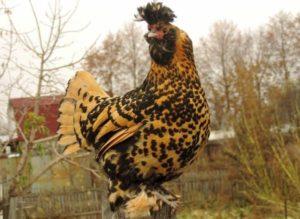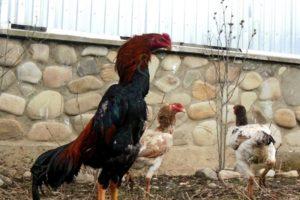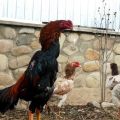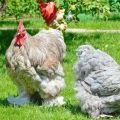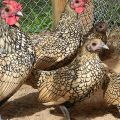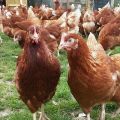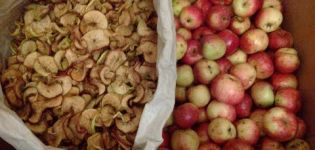Description of the 17 best males of fighting breed, maintenance and training
Fighting roosters are the oldest species and are popular with lovers of slaughterhouses. There are about 17 breeds, each of them has a unique appearance and physical qualities.
Before buying a fighting rooster, you should familiarize yourself with the recommendations for its content, nutrition, fights..
Origin and features
The homeland of fighting birds is Central Asia, from where the trend for bird competitions began. The breeds are distinguished by the following characteristics:
- weight - from 0.5 kg to 7 kg;
- the build is stocky, strong;
- powerful beak;
- sharp claws, widely spaced paws;
- muscular sternum;
- cocky, hot-tempered disposition.
Most fighting chickens are characterized by a large amount of muscle due to their dense body structure. Their meat is quite tasty.
Rules and types of battles
There are 3 types of bird competitions:
- match - pairs of competing birds are determined, the winner of the most points is declared the winner;
- royal battle - participants enter the ring, the surviving fighter becomes the winner;
- Welsh battle - during the first competition, 8 couples fight simultaneously, 4 winners fight in the 2nd round, after - the two remaining players.
All participants were grouped into groups based on their age:
- young animals - up to 1 year;
- perearkki - older than 1 year, faded 2 times;
- tretyakov - 3 years old;
- old - over 3 years old.
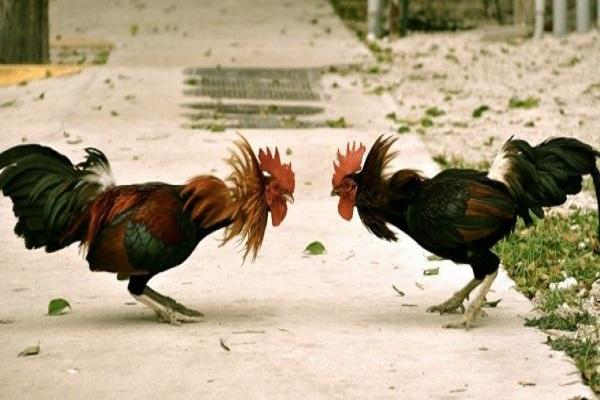
Youngsters were released into battle in October, adults - in November. Previously, victory was awarded after the death of one bird. In modern times, the rules have changed. At any time during the bout, a competitor can be taken, even if he is seriously injured.
There are 4 styles of fights:
- straight - the fighter flies up to the opponent, hits on the head;
- circled - one rooster is circling around an opponent so that he gets exhausted, then - beats;
- messenger - birds hit each other on the back of the head;
- fingered - fighters take cover, run under the wings or paws of the enemy.
Some roosters combine combat tactics, resort to different techniques. This increases their value in the eyes of breeders..
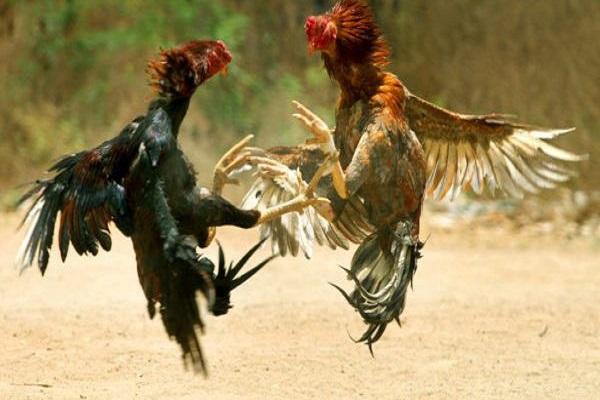
Best breeds
Below are the most resilient, popular fighting cock varieties. Detailed and description will allow you to have a clear idea of the type.
Azil
This is the most ancient breed of fighting birds, originally from India. Birds are divided into 2 types: cut, weighing from 2 to 3 kg, Kulangi, Madras, South Indian - chickens weighing up to 6 kg.Representatives of the species are strong, with short but strong legs, of medium height. They have a quarrelsome character, a shortened torso, powerful shoulders, high wings. Azil are excellent fighters who tend to become attached to their master. Mature cocks are considered from 1 year old. Their color is variegated red, but there is also piebald, gray, black and white.
English
The breed is originally from India, but the British have significantly improved the birds, modified them. The posture of the chickens is proud, the muzzle is long, flat, the eyes are large, perky. The scallop is red, erect, the body is extended forward. The bird stands steadily on the surface due to the long, spread fingers. The weight ranges from 3 kg. Individuals from six months old are allowed to fight.
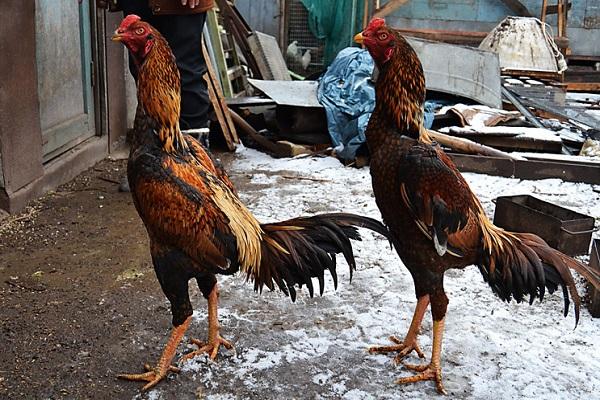
Belgian
The fighters were bred in Belgium in the 17th century. They have a strong body, a long neck, a bulging sternum. The musculature is well developed, the tail is raised, the scallop is shaped like a pod. They sometimes have double spurs. Sometimes birds suffer from a sinking back, high sternum. Feathers are soft, which is considered a disadvantage. The weight of males reaches 4.5-5 kg. Sexually mature birds are considered to be from 2 years old.
Indian
Indian fighting-type birds are an ancient breed, artificially bred by the symbiosis of several breeds - Malay and English. The birds have strong, powerful legs, a massive body, average growth. The feathers are smooth, the wings are shortened. The color is yellow, white, but brown, black, bluish individuals are also found. The advantages of the breed include powerful paws, frightening dimensions. Roosters prepare for the competition for a long time, they often get sick, unstable, aggressive.
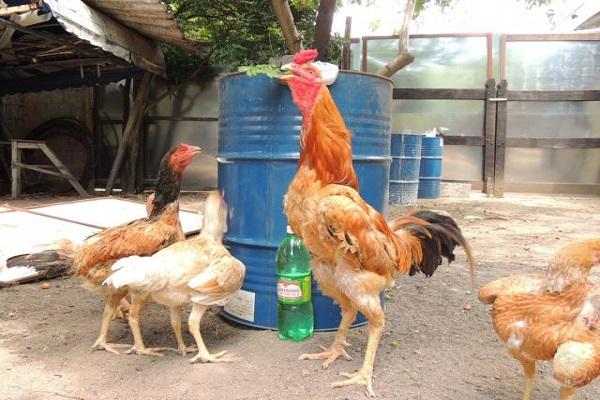
Dwarf Indian breed
Fighters of this breed first appeared in England in the 19th century. Dwarf Malay, Indian and English species were crossed. The weight of the males is 4.5 kg. The color of the feathers is pheasant-brown, the body is short, wide, short in stature. The sternum is massive, the beak is strong and curved.
Kulangi
Males are black, small, head flattened on the sides, strong and short beak. The body is set vertically, the neck is long and massive. Salmon-colored paws with black pigmentation. The individuals have an aggressive character, but they are easy to train.
Lari
Chickens are native to Afghanistan and Iran and are the best fighting breeds. The weight is about 2 kg. They have a quick-tempered, energetic character, they need constant training. The head is small, fits snugly to the carcass. Birds have a tightly compressed beak and strong legs. The color is white, the feathers are rare, without fluff. In winter, they need a warm room because of the thin and sparse cover. Maturity occurs by 2 years, but individuals are allowed to compete from 8 months.

Lutticher
The breed was bred in the 16th century, its ancestors are cocks with a pea-shaped comb. In its final form, cockerels appeared in the 19th century in Belgium. They have been officially recognized in Germany since 1983. Chickens are large, with a powerful muscular frame, strong claws. They have a cocky, pugnacious nature. Males weigh about 5 kg.
Malay fighting chickens
The variety was bred over 3,000 years ago in India, in the Malay Archipelago. Birds entered the EU countries in the 19th century. Adults up to 90 cm tall, with convex wings. They have a wide skull, yellowish or pearly eyes. Birds differ from other breeds in increased endurance, they are insensitive. Males weigh about 3.5 kg.
Moscow fighting chickens
The fighting breed originates from the English variety. Count A. Orlov brought them to Moscow. Individuals with a shallow head, broad shoulders, a powerful body. The legs are strong, long, the weight of the birds is 6 kg. The color is different, usually it is a red tint.
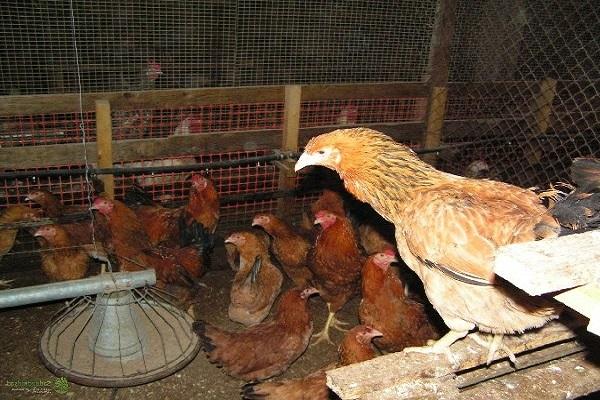
Elephant chickens
Elephant cocks were bred in Vietnam 600 years ago. About 300 of them live around the world. Their legs are unusually massive, pinkish, pimpled. The body is large, tall. The temperament is quick-tempered, difficult, they are difficult to train. The weight is about 6-7 kg.
Old English fighting breed
Dwarf subspecies and oxford are distinguished. The size of the birds is average, they have strong muscles, a long neck and a massive sternum. The weight of individuals ranges from 3 kg. The color is wheaten or black, bluish birds are less common. They have been taking part in battles since 1 year.
Sumatran
Variety with a red scallop, miniature size. The beak is strong, curved and short. Roosters have double or triple spurs with which they fight. The tail is lush, decorative. The temperament is cocky, they usually attack egg and meat breeds. Adult males weigh about 4 kg.
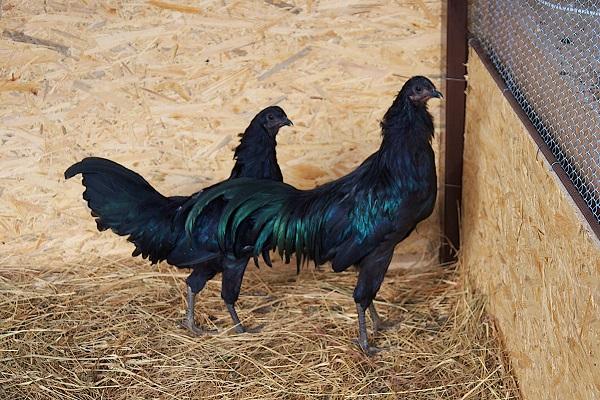
Tuzo
The birds are native to Japan. They have a graceful, small body, tight muscles, narrow shoulders. The head is wide and round. The weight is about 1.2 kg. Individuals are agile, fearless.
Shamo
There are 3 subspecies of the Shamo rooster breed, they are large, medium and dwarf. The birds are quite hardy, resistant to diseases and infections. You cannot cross them. The neck is long, the muzzle is elongated, the cheeks are muscular.
Yamato
The birds are small in size, with a straight posture, scanty plumage, curved neck. Wheat or dark in color. Individuals grow up to 2 years weighing up to 5 kg.
Taigo
The Korean rooster is a real gladiator, with an aggressive, hardy character. Paws cream color, pimpled, long. Feathers are black with a greenish tint. The tail is sprawling, decorative. Weight reaches about 3-4 kg.
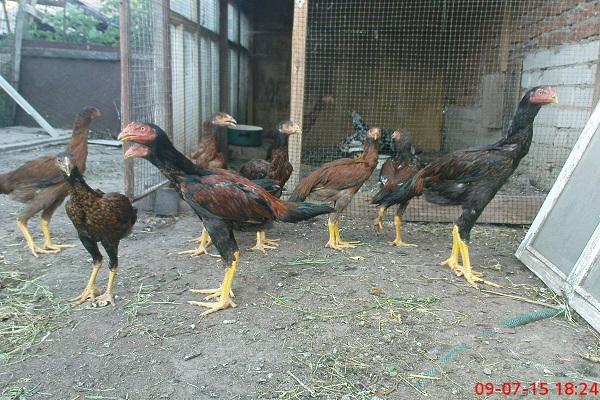
Pros and cons of fighting cocks
Fighting roosters are famous for their many advantages, but they also have negative traits.
| pros | Minuses |
| Delicious meat | Grumpy character |
| Intimidating appearance | Poorly tolerate cold |
| Accelerated growth | Low egg production |
| High meat productivity |
Features of maintenance and feeding
Fighting cocks should be kept warm as they have sparse feathers. The place must be dry, clean, so that there are no infections, bacteria do not accumulate. Each brawler is allocated a personal space - 0.5 meters. Otherwise, there will be fights for territory between birds.
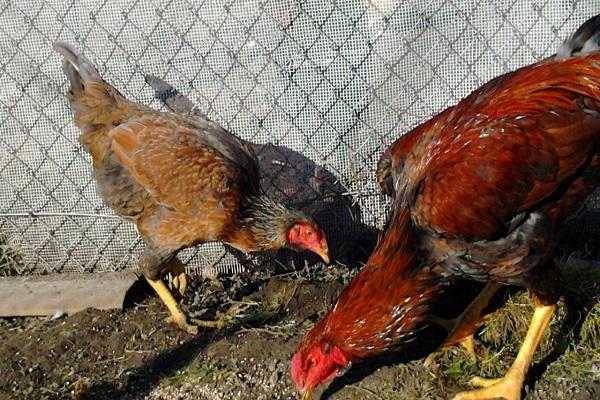
Chicks are fed from a pipette filled with egg yolk and milk if the young do not eat well. There should be 3 meals a day. The chicks' meal area should be well lit. Adults are fed with cereals, milled. They also give greens, and in winter they make up for its shortage with grass flour. Well-fed chickens are given black bread, and thin ones - millet.
Training fighters
The more intense and lengthy the training, the higher the chances of raising a worthy fighter.
The owner must train the rooster by teaching teams. They start training from 8 months of age.
In order to prevent injuries, aggressive attacks, the birds are docked with a comb, earrings.
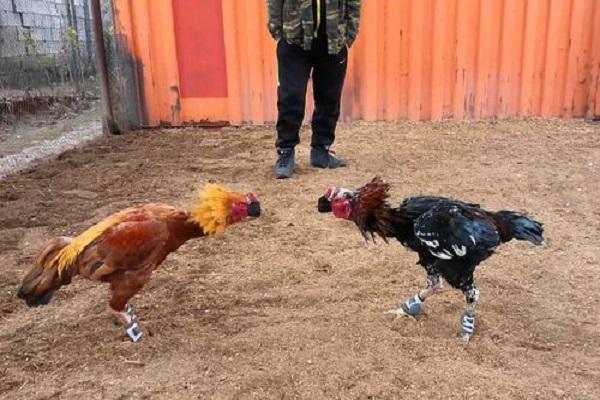
Common training methods include:
- hanging weights from the paws;
- long run in the wheel;
- to develop aggression - fighting with reflection in the mirror.
At the beginning, the feathered fighters engage in a fight with one old rival. After 2-3 months, it is replaced with young individuals.
